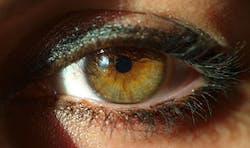BMC deformable mirror used in wavefront-sensorless AO scanning laser ophthalmoscope
Houston, TX--A group at the University of Houston is using a MEMS-based deformable mirror (DM) made by Boston Micromachines Corporation (BMC; Cambridge, MA) in research to image the living human eye via wavefront-sensorless adaptive optics. The result is an adaptive-optics scanning laser ophthalmoscope (AOSLO) that can image single cells in living eyes.
The AOSLO relies on an iterative stochastic parallel-gradient-descent (SPGD) algorithm to directly control the 140 actuators of the BMC Multi-DM to maximize the mean intensity in the acquired retinal images. The scientists are looking for mechanisms responsible for the development and progression of glaucoma and other ocular diseases.
The wavefront-sensorless approach produces images that rival those acquired using traditional wavefront sensor-based adaptive optics techniques, and when imaging dilated pupils provides even higher-contrast images. Because sensorless control requires less light for aberration correction, it offers potential advantages for imaging light-sensitive patients such as those suffering from rhodopsin disorders in retinitis pigmentosa. In addition, it offers advantages for applications such as autofluorescence imaging, where sensorless control allows direct optimization of the fluorescence signal.
Wavefront-sensorless AO systems are also less expensive than current AO retinal imaging systems.
"With this instrument we aim to provide an earlier structural marker for glaucoma at the site of initial damage in the optic nerve head. This will potentially enable better tracking of disease progression and assessment of the effectiveness of treatment," said Jason Porter, assistant professor at the University of Houston College of Optometry. "We chose the Multi-DM because its large actuator count allows for higher-order aberration correction, which was a key requirement for our approach. In addition we had successfully used BMC mirrors in previous retinal imaging projects."
The Multi-DMs by BMC can be made with either continuous or segmented surfaces for adaptive optics or spatial-light-modulator applications. They are capable of up to a 5.5 µm stroke and 100 kHz frame rate, and have subnanometer step size and zero hysteresis.
For more information, see www.bostonmicromachines.com.
About the Author
John Wallace
Senior Technical Editor (1998-2022)
John Wallace was with Laser Focus World for nearly 25 years, retiring in late June 2022. He obtained a bachelor's degree in mechanical engineering and physics at Rutgers University and a master's in optical engineering at the University of Rochester. Before becoming an editor, John worked as an engineer at RCA, Exxon, Eastman Kodak, and GCA Corporation.

